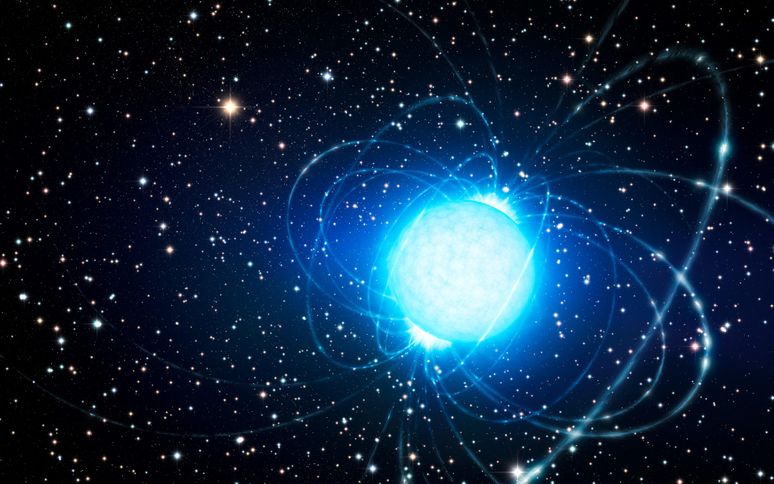A new Study revealed that the X-ray light emitted by a certain magnetar – a highly magnetized dead star – indicated that the star has a solid surface and no atmosphere.
According to a study published in the science journal revealed that a highly magnetized dead star known as a magnetar has a solid surface yet no atmosphere.
The study was led by researchers at the University of Padova, the study represents the first time polarized X-ray light from a magnetar has been observed.
This was observed from a magnetar polarized X-ray light for the first time.
IXPE team studied magnetar 4U 0142+61, located in the Cassiopeia constellation approximately 13,000 light years from Earth.
Magnetars are actually the neutron stars. They are quite dense remnant cores of massive stars that have exploded as supernovae at the ends of their lives. However, they are unlike other neutron stars, and have an immense magnetic field which is the most powerful in the universe.
They release bright X-rays and show erratic periods of activity, with the emission of bursts and flares which can release in just one second an amount of energy millions of times greater than our Sun emits in one year.
Scientists believe that they are powered by their ultra-powerful magnetic fields, 100 to 1,000 times stronger than standard neutron stars.
The research team discovered a much lower proportion of polarized light than would be expected if the X-rays passed through an atmosphere.
The Polarized light is light where the wiggle is all in the same direction – that is, the electric fields vibrate only in one way. An atmosphere acts as a filter, selecting only one polarization state of the light.
Co-lead author Professor Silvia Zane (UCL Mullard Space Science Laboratory), a member of the IXPE science team, expressed: “This was completely unexpected. I was convinced there would be an atmosphere. The star’s gas has reached a tipping point and become solid in a similar way that water might turn to ice. This is a result of the star’s incredibly strong magnetic field.”
He added “but, like with water, temperature is also a factor – a hotter gas will require a stronger magnetic field to become solid.”
He further said “A next step is to observe hotter neutron stars with a similar magnetic field, to investigate how the interplay between temperature and magnetic field affects the properties of the star’s surface.”
However, It is still a subject of argument whether or not magnetars and other neutron stars have atmospheres.
Professor Jeremy Heyl of the University of British Columbia (UBC) said: “It is also worth noting that including quantum electrodynamics effects. Nevertheless, we are also investigating alternative models to explain the IXPE data, for which proper numerical simulations are still lacking.”
